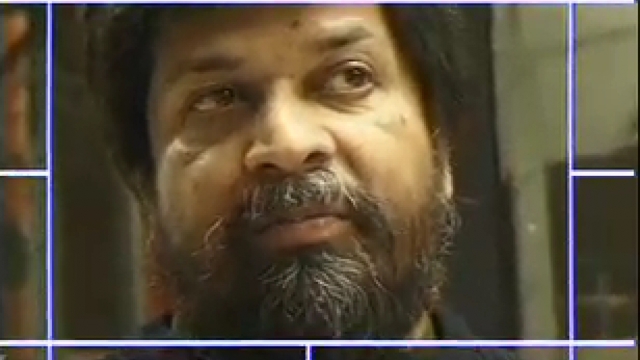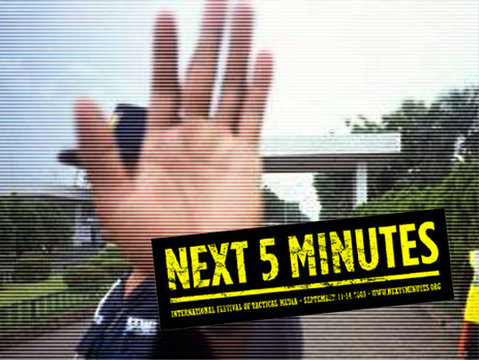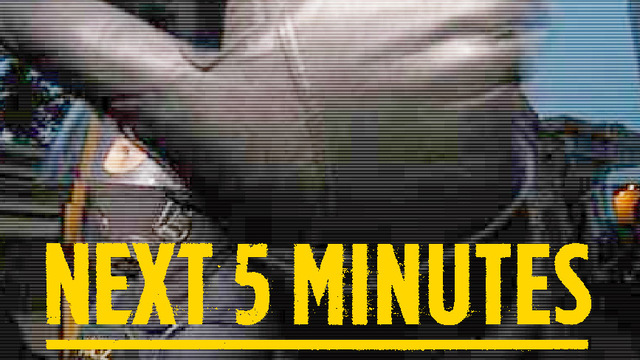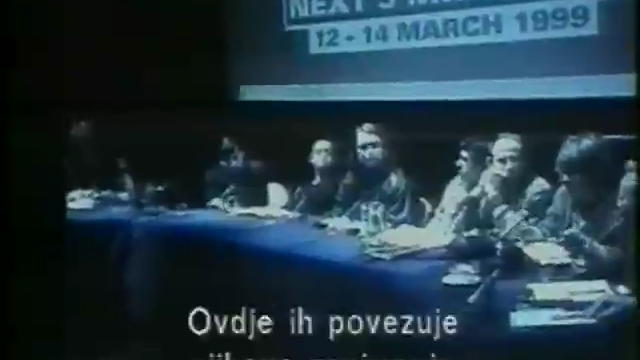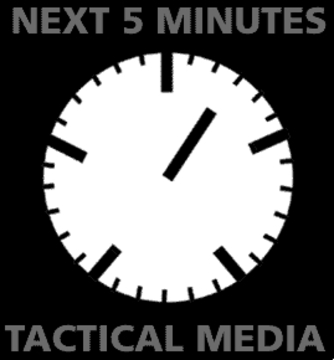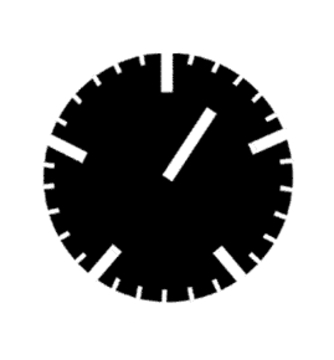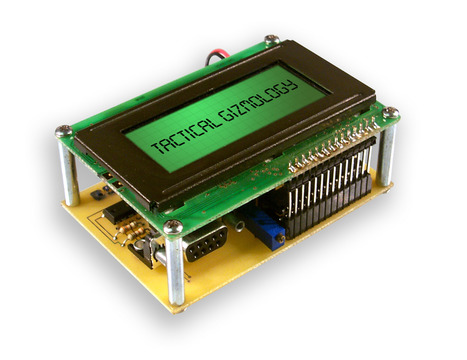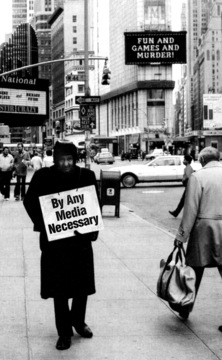Collection
TMF Editors
The Concept of Tactical Media
Tactical Media emerged when the modest goals of media artists and media activists were transformed into a movement that challenged everyone to produce their own media in support of their own political struggles. This "new media" activism was based on the insight that the long-held distinction between the 'street' (reality) and the 'media' (representation) could no longer be upheld. On the contrary, the media had come to infuse all of society... Read More
Next 5 Minutes 4
Next 5 Minutes is a festival that brings together media, art and politics. Next 5 Minutes revolves around the notion of tactical media, the fusion of art, politics and media. The festival is organised irregularly, when the urgency is felt to bring a new edition of the festival together.
ReadThe ABC of Tactical Media
Tactical Media are what happens when the cheap 'do it yourself' media, made possible by the revolution in consumer electronics and expanded forms of distribution (from public access cable to the internet) are exploited by groups and individuals who feel aggrieved by or excluded from the wider culture. Tactical media do not just report events, as they are never impartial they always participate and it is this that more than anything separates them from mainstream media.
Digital Resistance (CAE)
PDF version of the book by Critical Art Ensemble.
30 Years of Tactical Media
This is a short text [1] which appears in "Public Netbase: Non Stop Future. New Practices in Art and Media" edited by the fine people at the New Media Center_kuda.org, in cooperation with World-Information Institute / t0. This book was presented at Transmediale 2009 in Berlin.
http://nonstop-future.org
Tactical media as a practice has a long history and, it seems save to predict, an even longer future. Yet its existence as a distinct concept around which something of a social movement, or more precisely, a self- aware network of people and projects would coalesce has been relatively short lived, largely confined to the internet's first decade as a mass medium (1995-2005).
Next 5 Minutes 2
Next 5 Minutes: tactical media was a conference and exhibition that took
place at Amsterdam's Balie and Paradiso and at Rotterdam's
V2_Organisation from January 18th till January 21st 1996. The
conference was officially opened Thursday evening in Rotterdam with a
performance of the Critical Art Ensemble from Chicago about the matter
of media.
Legacies of Tactical Media
INC Network Notebooks 05: Legacies of Tactical Media - The Tactics of Occupation: From Tompkins Square to Tahrir, Institute of Network Cultures, Amsterdam, November 2011.
Some points of departure
Introductory essay for the second editon of the Next 5 Minutes festival of tactical media, 1996.
Next 5 Minutes 3
Amsterdam & Rotterdam, The Netherlands, 12-14 March, 1999
The third Next 5 Minutes, an Amsterdam based conference on tactical communications culture, featuring do-it-yourself media, dissident art and electronic media activists from around the world, took place on the 12th, 13th and 14th of March 1999.
N5M3 archived festival website
ReadNext 5 Minutes 3 Workbook
Festival catalogue and reader, March 12-14, 1999.
The Becoming Environmental of Power: Tactical Media After Control - Part I
There is a last enterprise that might be undertaken. It would be to seek
experience at its source, or rather, above that decisive turn where,
taking a bias in the direction of our utility, it becomes properly human
experience. (Bergson, 1991: 184).
Next 5 Minutes 1
The Next Five Minutes is a conference, exhibition and tv program taking place between 8th and 10th January 1993 in Amsterdam, that wants to leave behind the rigid dichotomy between the mainstream, commercial and national tv on one hand and marginal independent tv on the other. Although these differences may still be important, N5M wants to focus on tv-makers crossing the borders of tv-making and going into the spaces that the tv-world still has to offer.
ReadNext 5 minutes 4 reader
The complete reader, including design, of the Next 5 Minutes 4 international festival of tactical media, Amsterdam, September 11 - 14, 2003.
The Becoming Environmental of Power: Tactical Media After Control - Part II
There is a last enterprise that might be undertaken. It would be to seek experience at its source, or rather, above that decisive turn where, taking a bias in the direction of our utility, it becomes properly human experience. (Bergson, 1991: 184).
ReadDigital Resistance (CAE)
PDF version of the book by Critical Art Ensemble.
Islam and Tactical Media in Amsterdam
Essay written in August 2002 for the New York University Tactical Media Lab, organised by the NYU Center for Media, Culture and History.
Strategies for Tactical Media
Conscious of the growing involvement of artists in political protest through their art and the utilisation of conventional and digital media technologies, RealTime's editors approached media theorist McKenzie Wark to comment on where he sees Tactical Media fitting in the bigger picture of power and media.
ReadThe Language of Tactical Media
"World War III will be a guerilla information war, with no division between military and civilian participation." -- motto of Tactical Media Crew, borrowed from Marshall McLuhan
ReadTactical Media After 9-11
It is tempting to portray '9-11' as a turning point. Gore Vidal warns
that, since September 11, the US is in danger of turning into a "seedy
imperial state." Make war, not politics. The new patriotism requires: "Disruption, including obstructing the view or hearing of others, will
not be tolerated." The list of measures to restrict civil liberties,
freedom of speech and privacy, or what?s left of it, doesn?t stop. A
recent conference in Perth concluded that post-September 11 reporting
adds to divisions and stereotypes. "The media's failure to provide more
perspectives to news consumers and ask critical questions is fuelling a
culture of fear and blame around the world, experts say."
The DEF of Tactical Media
Campaigns and Movements Although a global conference, the first Next 5 Minutes, held six years ago(1993), was dominated by the first large scale encounter between two distinctive cultural communities. On the one hand, Western European and North American campaigning media artists and activists and on the other hand their equivalent from the former communist countries of Central and Eastern Europe, dissident artists and samizdat activists, still basking in the after glow of the role they played in bringing down the communist dictatorships. In the excitement of discovering each other, these two communities tended to gloss over their ideological differences,understandably emphasising only the shared practice of exploiting consumer electronics (in those days mostly the video camcorder) as a means of organisation and social mobilisation. We referred to these practices, and the distinctive aesthetic to which it gave rise, tactical media.
ReadRemaking Media Practices - From Tactical Media to Post-Media
If media theory over the last 40 years largely understood media as hopelessly contaminated by capitalism, the quietism implied by this critique also met its challenge in Guattari's concept of 'becoming-media'. Here Clemens Apprich revisits key media political debates to imagine post-media approaches in the age of social media.
Read

